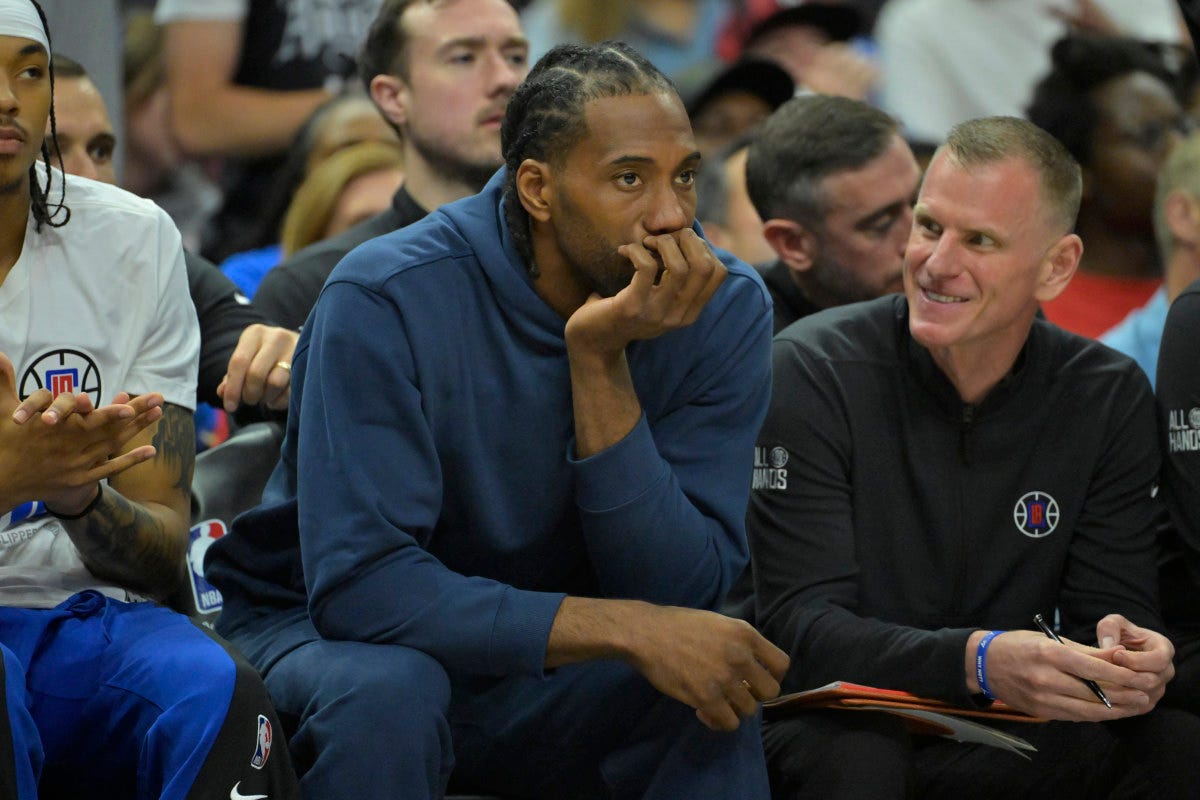The Truth Behind Load Management
…And why it’s probably going to become more pronounced
Every few months, like clockwork, the discourse around NBA load management crops back up. It’s a tired conversation where the same points get continuously rehashed about the paying fan, doing your job, and dozens of back-in-my-dayisms. Apparently, no one likes it, but organizations and players feel it is a necessary evil to survive an 82-game season plus up to four potential playoff series on top of the 41,000 air miles.
The single biggest problem with the most tired conversion in sports is hardly anyone cites real data. The NBA, in an effort to justify its player participation policy, sent an unpublished report to teams citing no injury prevention benefits due to load management. While this would have been a great way to add some level of nuance to the conversation, the only bit of data we got was this:
“The 57-page report emphasized the fluctuation between star players missing games. Between the 1990s to today, the average number of games missed per season by those defined as star players rose considerably. In the ‘90s, it was 10.6 games. In the 2020s, it’s 23.9 games.”
Claiming basketball in the 1990s has any bearing on today’s game is incredulous and misses the critical issue the modern player faces– an ever-increasing load.
Thanks to NBA tracking data, we now know how many miles an NBA team covers in a given season dating back to the 2013-14 season. Fundamentally, this is a very good measure of league-wide physical load. Over the past ten seasons, teams have gone from covering, on average, 1,384.1 miles per 82 games to 1,492.3, and as of a few days ago, the league average was on pace to hit 1,528. However, this leaves us with a predicament. Yes, players are covering more ground, but load management has been around longer than the tracking data. Thankfully, I found two bellwether statistics that will allow us to take a glimpse into the past and how much has changed over the past 45 years.
On offense, the league-wide pace had a linear correlation to offensive miles covered of 0.935, and on defense, the league-wide 3-point attempt rate (3PAr) came in at 0.903. This makes sense, pace measures how many possessions in a game, or how many times a team goes up and down the court, and 3PAr is an excellent proxy for how much ground a defense has to cover.
With that discovery, I simply added pace and 3PAr multiplied by 100 to create “Pace + 3PAr”. And much to my delight, the metric had a linear correlation of 0.935 to the average distance covered. When you find a linear correlation this strong, you know you’re onto something. Using a linear forecast model, I calculated how many miles teams covered on average dating back to 1980 based solely on league average pace and 3PAr. While these figures are not exact, there is a high likelihood that the overall trend is accurate, and the results are staggering.
According to the linear forecast, it’s estimated that teams on average covered 1,282.5 miles in the 1979-80 season and that figure would hold steady for the next 15 seasons. In fact, the slight blip in the mid-90s coincides with the relative explosion in 3-pointers due to moving the 3-point line in. If we take those figures with a grain of salt, it isn’t until the mid-2000s that we’re consistently above 1,300 miles, and following the 2012-13 season, we see a massive explosion in distance traveled as pace and 3PAr spike. It took 34 years, from 1979-80 to 2013-14, for the league average distance traveled to grow 100 miles, but it only took five seasons to grow its next 100 miles. The load on players is coming fast and furious, and star players are bearing the brunt.
Energy expenditure, much like shots and playing time, aren’t distributed evenly. The best players are asked to expend more energy and thus the 200 additional miles needed to traverse an NBA season are being disproportionally shouldered by the game’s best. The implementation of the NBA’s player participation policy is fundamentally dangerous legislation that will have the exact opposite effect as intended. It’s far better for a player to take the night off than it is for them to suffer an injury.
There is some good and bad news in these findings. The league average pace has leveled off at around 100 possessions per game. This will help tremendously in keeping players' total load down as it puts a cap on how much ground they have to cover. The bad news is the growth in 3PAr has no real end in sight. Between 2019-20 and 2023-24, 3PAr settled in at around 39% of shots, but that figure has ballooned to 41.8% this season and it doesn’t appear the sport has found the upper limit for 3-point volume.
In reality, load management is about keeping star players’ physical loads in line with historical norms. The human body can only handle so much before it breaks. As long as the load continues to rise the management will as well. Until the NBA actually tries to combat the core causes of ever-increasing loads, star players will continue to rest, continue to break, and the same idiots will complain with the same tired points.
For any inquiries about work, discussion, and the like you can email me at nevin.l.brown@gmail.com.



